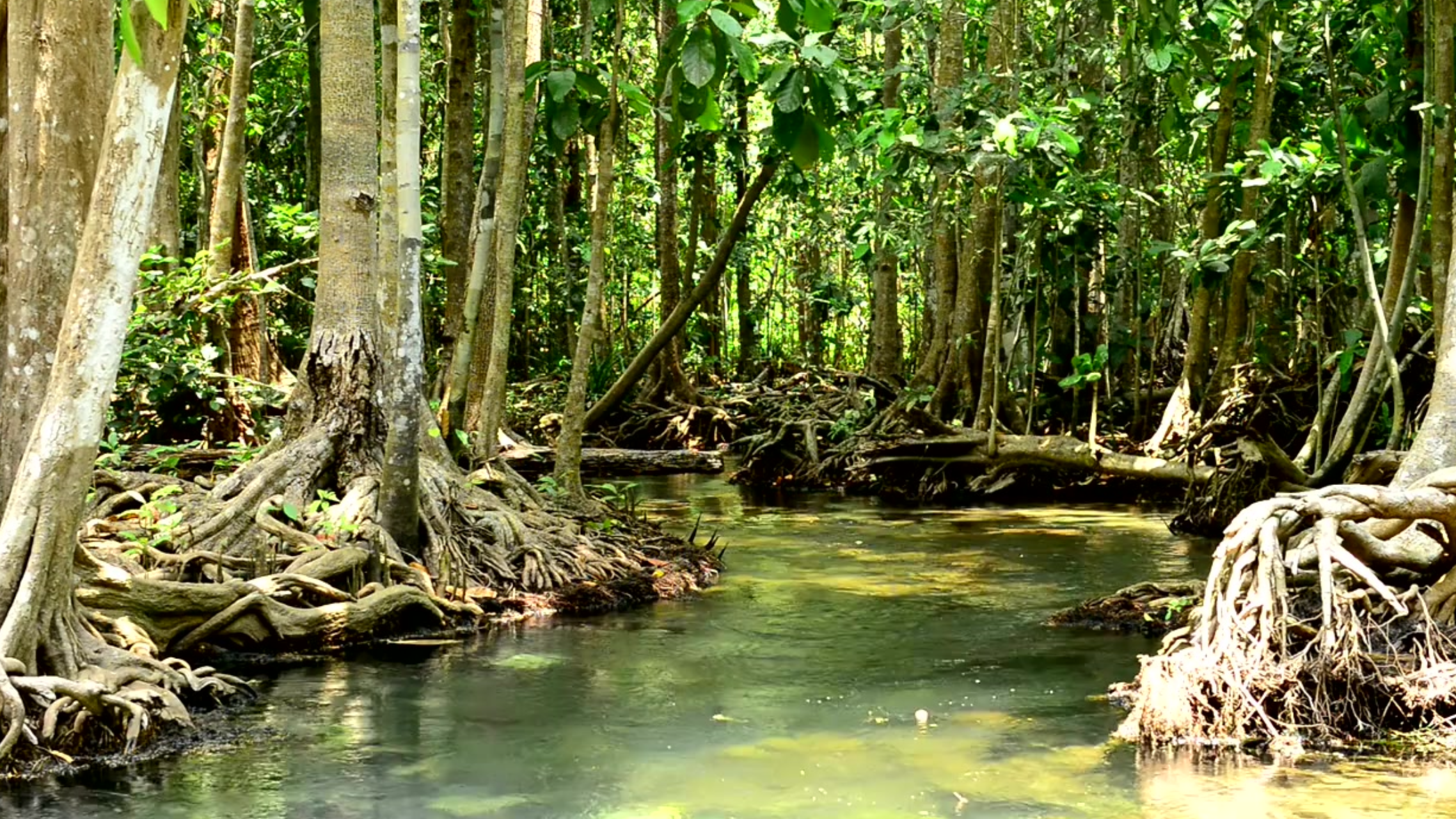Why we love Mangroves!
Being in the Caribbean, the big draw for wildlife fanatics is often the vibrant fringing reef on our doorstep. It’s easy to overlook other ecosystems in favour of the bright colours, crystal clear waters and exotic looking fish. But we don’t have to go diving into the ocean to view one marine ecosystem. In fact, we don’t even have to get our feet wet. As you head down the path from Ankay’s front door to the pier (fins and mask in hand), take a moment to stop and consider the mass of submerged roots and luscious green leaves that surround you. These are our mangroves. Without them there would be no coral reef, and there would be no Ankay. These are the hidden heroes of Bocas del Toro and an integral part of the tropical ecosystem here. Found in more than 100 countries and with global coverage declining, we think they deserve a little more attention, so here are 4 reasons why we think mangroves rock!

#4
They keep the water healthy for corals
Mangroves provide countless services to the natural world and humans, but a major one is regulation of water quality. The complex web of roots help to stabilise silt, buffer excess nutrients and lower turbidity, filtering out particulate matter. Without mangroves, this silt and particulate matter would be swept onto the reef, smothering the sensitive corals and shifting conditions to become unfavourable for the corals to thrive.
#3
They protect us from storms, flooding and costal erosion
These unsuspecting trees are our natural sea defences, protecting us from rough seas and surging sea levels. With extreme weather events set to increase in strength and frequency as the climate crisis worsens, we’re turning to our mangroves to keep us safe. Mangroves often protect populations most vulnerable to the effects of climate change, including those living in close proximity to the sea, on small low-lying islands. These populations often rely on the ocean for provision of food and income too. Degradation or removal of mangroves could prove devastating for communities such as these.
#2
They are an important carbon store
Mangroves aren’t just a great defence against the effects of climate change. They can also help to mitigate the effects in the first place. As photosynthesisers they breathe in carbon dioxide, storing it in their roots, branches and surrounding sediment; and they can do this at a rate 10x faster than terrestrial forests (1).
#1
They support thousands of species
Worldwide, there are over 900 species associated with mangroves (2). These are the species which use the mangroves directly; to hunt, feed, breed, grow, shelter and much more. Once you include neighbouring ecosystems such as the coral reefs, seagrasses and estuaries, there are over 8000 species which benefit from mangroves indirectly through processes such as predation upon mangrove-associated species, water quality regulation, or wave-dissipation.
References:
(1) Accessed 06/02/2023 (https://www.theguardian.com/environment/2021/nov/04/can-blue-carbon-make-offsetting-work-these-pioneers-think-so#:~:text=Mangroves%2C%20like%20other%20coastal%20wetlands,times%20more%20carbon%20than%20forests)
(2) Accessed 06/02/2023 (https://www.iucnredlist.org/search)
